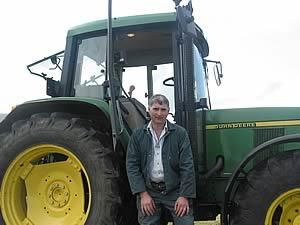 |
|||||||||
|
|||||||||||||||||||
|
|
Is there a Future for the North West's Beef Industry? 15/09/05
THE last few weeks have been very difficult for the red meat producer. Many factors have conspired to drive farm gate price dramatically down. Is this part of the new decoupled era and the market places response to business in the reformed CAP? Much was spoken about the challenges and opportunity the reform would bring, it appears, at the moment, that the challenges are exceeding the opportunities. Whilst producer confidence is being bruised on a weekly basis we must not loose sight of what some of the realities of this new market place are likely to be. Imports will always be a serious factor. Currently, 30% of beef consumption has to be sourced from abroad. That is not just a topping up exercise by the retail, processing and food service sectors, it is a serious traffic of volume. Abundant supply from domestic production and readily available imports are any food supply chains dream, except if you are the domestic primary producer. Balancing supply and demand, by the supply chain will inevitably create peaks and troughs in the price we receive. It has always been so and will continue. What we have to manage is where we are in the peak and trough stakes. Indeed we have to become more focused on reducing the frequency and fluctuations of prices. Reality is sometimes about understanding a few simple facts. Around 50% of our beef production comes from the dairy herd, in all the forms that brings. Recognised as not the highest of value it plays and will continue to play an important role at the 'value' end of the market. This market looks set for a difficult period as OTM cattle start to enter the supply chain and market capacities inevitably have to adjust. The value market will always be competitively priced and very sensitive to import availability and pricing. Suckler beef production no doubt produces the premium product. It is proudly badged with all its production qualifications and has a far less replaceable identity than many would think. Indeed increasing amounts of this specialist production finds niche market premiums, beyond the commodity label. However, much of this premium beef is still sensitive to the price and availability of imports. Its badges have not necessarily returned any premium in price but have certainly assisted its availability and visibility, particularly on supermarket shelves. The conclusion here is that credentials are essential for a premium product but on their own will not drive a premium into the price for commodity beef. Essentially all it does is give consumer choice at little or no extra cost. We must recognise this and with the exception of niche market production, plan where our individual or collective market is. Plan where our production fits best. So what about the sums? Significantly what is clear about the recent poor beef price is that producers will not be able to continue long term, the supply balance would then inevitably swing to imports and the food supply chain then becomes more reliant on one source and the infrastructure of the domestic industry would decline and change. At what point this becomes significant is anyone's guess. But recent activity by the NFU livestock board with retailers suggest that there is a real nervousness now about future supply. Our current price plight is essentially about poor information, bad planning, policy change and industry propaganda. It has to stop. Identifying new ways of communicating with those that matter, the producer, and those that sell the end product is essential. We must build strong mutual trust into the supply chain, remove the smoke and mirrors of old ways and build a realistic sustainable farm gate price. I am not naive to suggest we can name our price and am much more realistic in expectation than some about futuristic prices, but clearly this current price trough is not sustainable and is recognised by those at the end of the supply chain as such. The reality here is about fair price for fair product. That is indeed a great challenge, but the reality is that we must create the opportunity to build confidence and stability for all in the beef supply chain. British beef has a good future provided we recognise what our markets are and what the realities may be. | ||||||||||||||||||

|
|
||||||||||||||||||
| home | agri-services | pedigree
pen | news | dairy | beef | machinery BPS | property | organisations | site map |
|||||||||||||||||||
